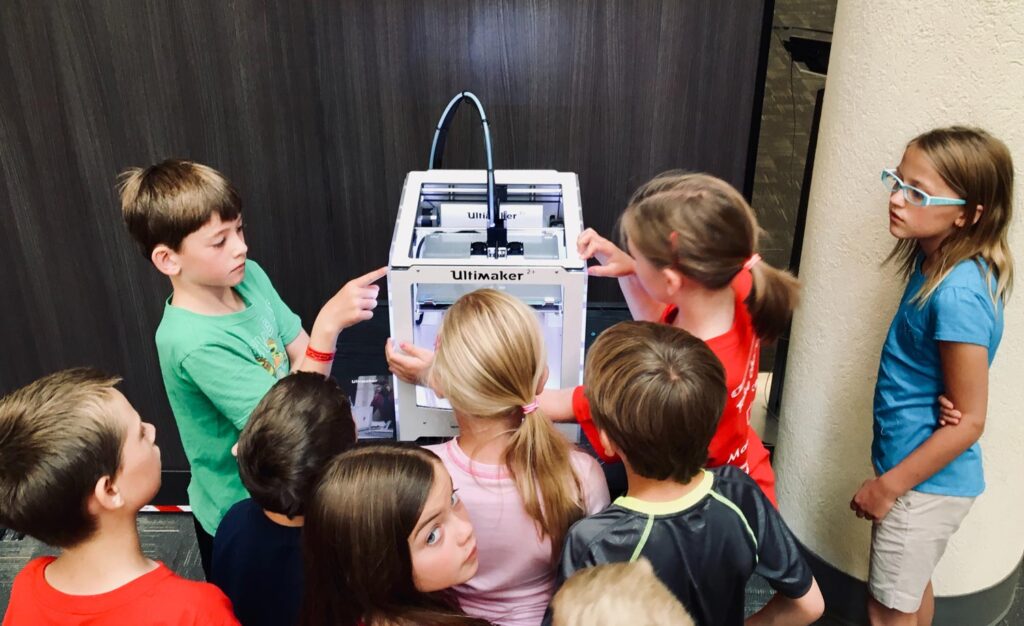5 New Technologies Every Parent Should Know About That Are Transforming Student Learning
5 New Technologies Every Parent Should Know About That Are Transforming Student Learning
As parents, we are constantly seeking ways to support our children’s education and provide them with the best opportunities to succeed. In today’s digital age, technology is reshaping the way students learn and acquire knowledge. From adaptive learning platforms to virtual reality simulations, innovative technologies are revolutionizing education and enhancing the learning experience. In this article, we will explore 10 of the newest technologies that are transforming the way our children learn, helping them thrive in a rapidly evolving world
1. AI Chatbots:
A chatbot is a computer program designed to simulate human conversation through text or voice-based interactions. It uses artificial intelligence (AI) techniques, natural language processing (NLP), and machine learning algorithms to understand user input, interpret it, and generate appropriate responses. Chatbots like ChatGPT, can be a valuable tool in education to support student learning. The “Chat” in the name is a reference to it being a chatbot, and the “GPT” stands for generative pre-trained transformer—a type of large language model.
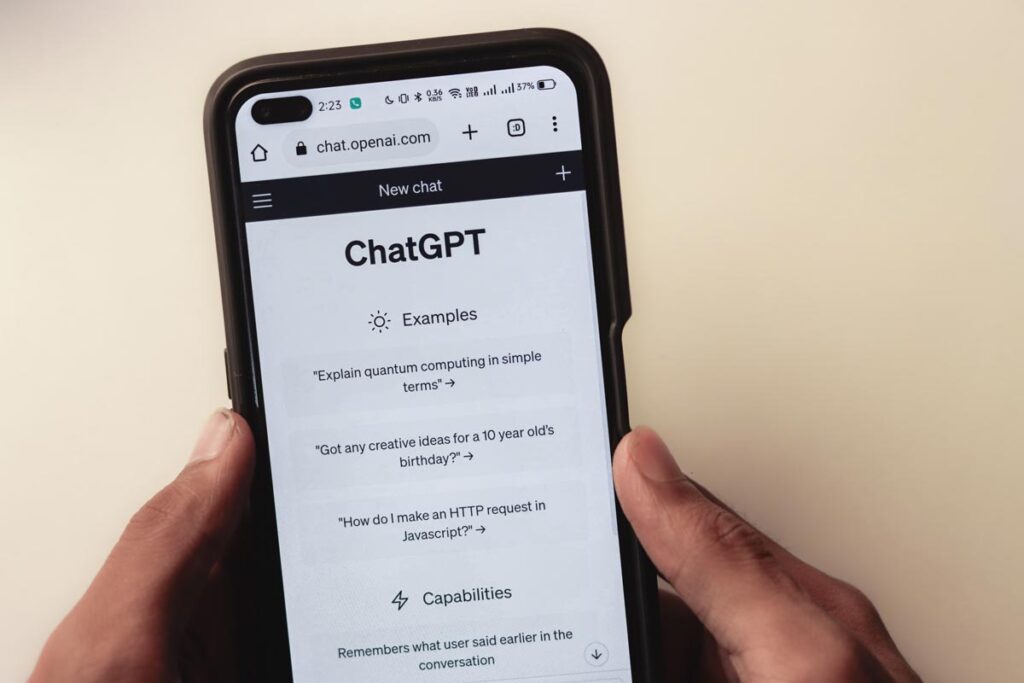
Answering Questions and Providing Explanations: ChatGPT can serve as an interactive knowledge resource, answering students’ questions and providing explanations on a wide range of topics. It can help clarify complex concepts, provide definitions, and offer additional information to supplement classroom learning.
Tutoring and Personalized Assistance: Students can engage in one-on-one sessions with ChatGPT to receive personalized tutoring and assistance. They can ask for help with specific problems or areas of confusion, and ChatGPT can provide step-by-step explanations or guide students through the problem-solving process.
Language Learning and Practice: ChatGPT can assist students in language learning by providing conversational practice and feedback. It can engage in dialogues, help with grammar and vocabulary, and simulate real-life language interactions, allowing students to practice their language skills in a supportive environment.
Creative Writing and Feedback: ChatGPT can assist students in generating ideas and improving their creative writing skills. It can offer prompts, suggest storylines, or provide feedback on written compositions, helping students refine their writing style, structure, and grammar.
Research and Information Gathering: ChatGPT can assist students in gathering information for research projects or assignments. By providing relevant facts, summarizing articles, or suggesting credible sources, it can help students save time and access reliable information to support their academic work.
Critical Thinking and Problem-Solving: ChatGPT can engage students in critical thinking exercises and problem-solving scenarios. By asking open-ended questions, challenging assumptions, and presenting alternative perspectives, it can stimulate students’ analytical thinking skills and encourage them to approach problems from different angles.
Revision and Exam Preparation: ChatGPT can assist students in reviewing and preparing for exams. Students can ask questions about specific topics, request study guides, or engage in practice quizzes, helping them reinforce their understanding and consolidate their knowledge before assessments.
Personalized Learning Experiences: With its ability to adapt to individual student needs, ChatGPT can provide personalized learning experiences. It can tailor content, examples, and explanations based on a student’s interests, learning pace, and preferred learning style, catering to their unique requirements.
It’s important to note that while ChatGPT can be a useful tool in education, it should not replace human interaction and guidance from teachers. It is most effective when used as a supplementary resource to support and enhance student learning, providing additional explanations and practice opportunities. Educators are striving to stay ahead of the curve to figure out how to use Chatbots as learning tools rather than crutches.
2. Virtual Reality (VR) for Immersive Learning:
Virtual Reality (VR) technology has gained significant traction in education, transforming the way students learn and engage with content. Here are specific examples of VR being used in education:
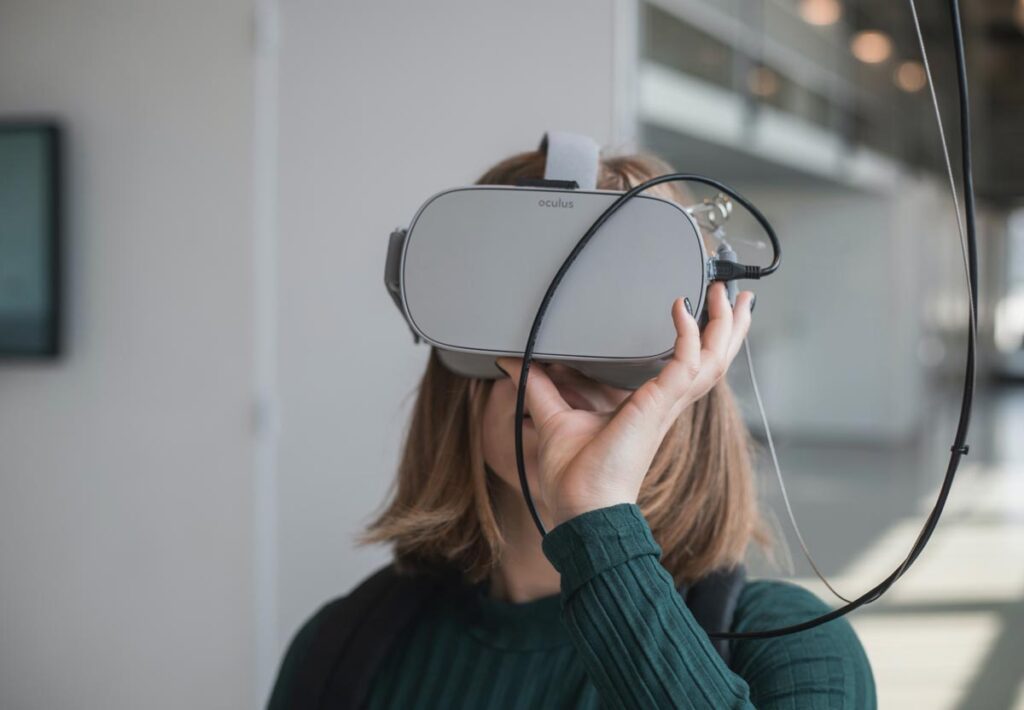
Field Trips and Virtual Tours: VR allows students to explore virtual environments and go on virtual field trips to places they may not have the opportunity to visit physically. They can virtually visit historical sites, museums, ecosystems, or landmarks, providing an immersive and interactive learning experience.
Science and Anatomy Education: VR enables students to explore complex scientific concepts and observe microscopic structures in a 3D virtual environment. They can dissect virtual organisms, explore the human body, or witness scientific phenomena that are otherwise challenging to demonstrate in traditional classrooms.
Cultural and Historical Immersion: VR offers students the chance to step into different time periods and cultures, enhancing their understanding of history and global diversity. They can virtually experience ancient civilizations, significant historical events, or cultural traditions, fostering a deeper appreciation and empathy for diverse cultures.
STEM Simulations and Experiments: VR simulations provide a safe and cost-effective way for students to conduct science experiments and explore STEM concepts. They can engage in virtual chemistry experiments, physics simulations, or engineering design challenges, fostering hands-on learning and experimentation.
Language Learning and Cultural Exchange: VR facilitates language learning by creating virtual environments where students can practice language skills in realistic scenarios. They can engage in conversations with virtual characters or interact with immersive language-learning simulations, enhancing their language proficiency and cultural understanding.
Special Education and Inclusion: VR offers inclusive learning experiences for students with special needs. It can create virtual environments tailored to their individual requirements, allowing them to learn at their own pace and engage with content in a more accessible and inclusive manner.
Training and Skill Development: VR is used in vocational and professional training programs to provide realistic and immersive simulations. Students can practice tasks, develop technical skills, and experience workplace scenarios, preparing them for real-world challenges in fields such as healthcare, aviation, or construction.
Emotional and Empathy Education: VR can be employed to create immersive experiences that foster empathy and emotional understanding. Students can virtually experience different perspectives, such as life in poverty or the challenges faced by individuals with disabilities, helping them develop empathy and compassion.
These examples illustrate the diverse applications of VR in education, providing students with immersive, interactive, and memorable learning experiences that go beyond traditional classroom methods. VR has the potential to engage students, enhance comprehension, and make learning more exciting and impactful.
3. Augmented Reality (AR) for Interactive Learning:
Augmented Reality (AR) technology has become increasingly prevalent in education, offering immersive and interactive experiences that enhance learning. Here are specific examples of how AR is used in education:
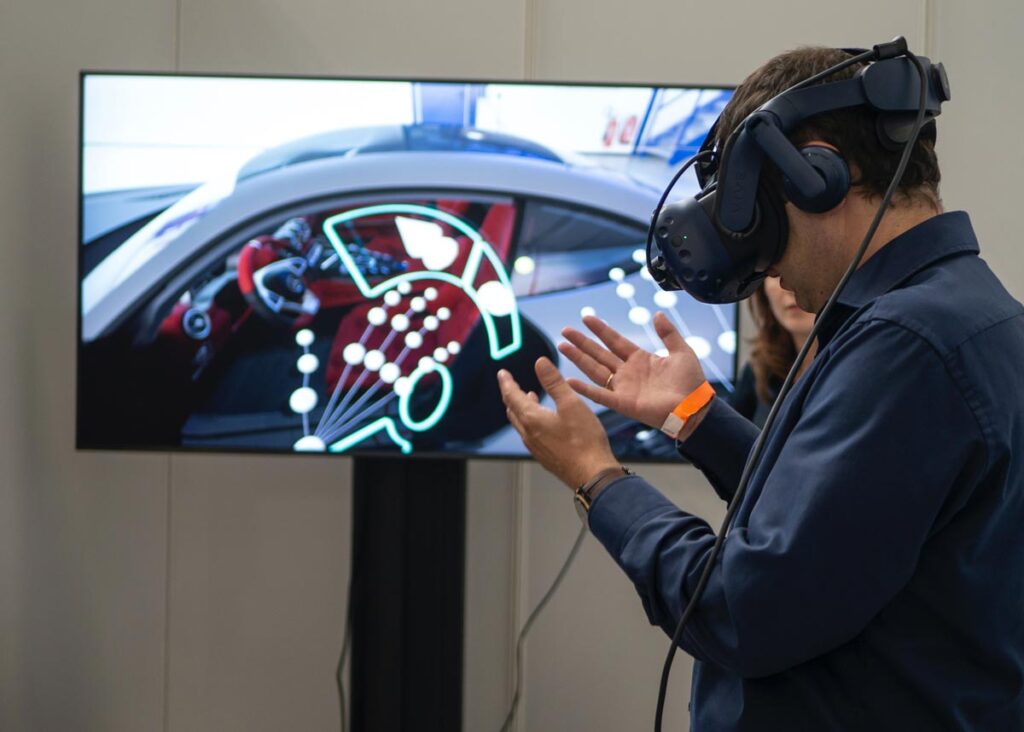
Interactive Textbooks: AR enhances traditional textbooks by overlaying digital content onto physical pages. Students can use AR-enabled devices, such as smartphones or tablets, to scan images or pages and access additional information, interactive simulations, 3D models, or videos related to the content they are studying.
Science Experiments and Simulations: AR allows students to engage in virtual science experiments and simulations. They can observe and interact with virtual elements, conduct virtual dissections, or simulate chemical reactions in real-time, providing a safe and engaging learning experience.
Language Learning and Vocabulary Acquisition: AR applications provide interactive language learning experiences. Students can point their device’s camera at objects and have the corresponding word or translation displayed in real-time. This helps reinforce vocabulary acquisition and improve language proficiency.
Virtual Art and Design: AR enables students to create and interact with virtual art and design elements. They can use AR applications to visualize 3D models, simulate art installations, or overlay digital content onto physical artwork, fostering creativity and allowing for dynamic exploration of artistic concepts.
Historical and Cultural Exploration: AR brings history and culture to life by overlaying digital reconstructions or visualizations onto real-world locations. Students can explore historical sites and landmarks, witness significant events, or experience cultural artifacts, offering a deeper understanding and connection to the past.
Interactive Mathematics: AR can help students visualize and comprehend complex mathematical concepts. By using AR applications, students can manipulate 3D geometric shapes, explore spatial relationships, or engage in interactive math games, making abstract mathematical concepts more tangible and engaging.
Virtual Field Trips: AR allows students to take virtual field trips without leaving the classroom. They can virtually visit museums, historical sites, natural wonders, or cultural landmarks through AR applications, providing an immersive and interactive exploration experience.
Accessibility and Special Education: AR can be used to provide inclusive learning experiences for students with diverse needs. It can offer visual aids, audio cues, or interactive elements that support students with disabilities or learning differences, promoting an inclusive and accessible educational environment.
These examples showcase the versatility of AR in education, enriching traditional learning methods with interactive and immersive experiences. AR technology enables students to visualize complex concepts, engage with content in a dynamic manner, and explore subjects in a way that sparks curiosity and deepens understanding.
4. 3D Printing:
3D printing has emerged as a powerful tool in education, revolutionizing the way students learn and engage with various subjects. Here are some ways in which 3D printing is used in education:
Hands-On Learning: 3D printing allows students to bring their ideas to life by designing and creating physical objects. It promotes hands-on learning, problem-solving, and critical thinking as students work through the iterative process of designing, prototyping, and refining their 3D models.
STEM Education: 3D printing is particularly valuable in science, technology, engineering, and mathematics (STEM) education. Students can design and print models of complex structures, mechanical parts, or scientific models, enabling them to visualize and understand abstract concepts in a tangible and interactive way.
Design and Engineering Projects: 3D printing enables students to design and fabricate prototypes for engineering and design projects. They can iterate and test their designs, assess functionality, and make improvements based on the physical models they create, fostering creativity, innovation, and practical problem-solving skills.
Anatomy and Biology Education: 3D printing allows the creation of detailed anatomical models, giving students a hands-on experience with human organs or biological structures. These models provide a deeper understanding of complex systems and aid in the study of biology, medicine, and healthcare.
Historical and Archaeological Replicas: 3D printing can recreate historical artifacts or archaeological findings, allowing students to explore and handle replicas of ancient objects. This provides a unique opportunity to study history, culture, and archaeology in a tangible and immersive way.
Art and Design: 3D printing expands the possibilities for artistic expression and design exploration. Students can create intricate sculptures, architectural models, or unique artistic pieces using 3D printers, merging creativity with technology and fostering multidisciplinary skills.
Special Education and Accessibility: 3D printing has been instrumental in creating customized learning materials for students with disabilities or special needs. It allows the production of tactile models, braille texts, or assistive devices tailored to individual requirements, promoting inclusive education and accessibility.
Entrepreneurship and Innovation: 3D printing empowers students to develop entrepreneurial mindsets and innovative ideas. They can prototype and test their product concepts, create functional prototypes, or even launch small-scale businesses using 3D printing technology, fostering creativity, collaboration, and real-world problem-solving skills.
Overall, 3D printing brings a new dimension to education by providing students with the ability to transform digital designs into physical objects. It enhances hands-on learning, fosters creativity and critical thinking, and enables students to explore various disciplines in a practical and engaging manner.
5. Artificial Intelligence (AI) Platforms in Adaptive Learning:
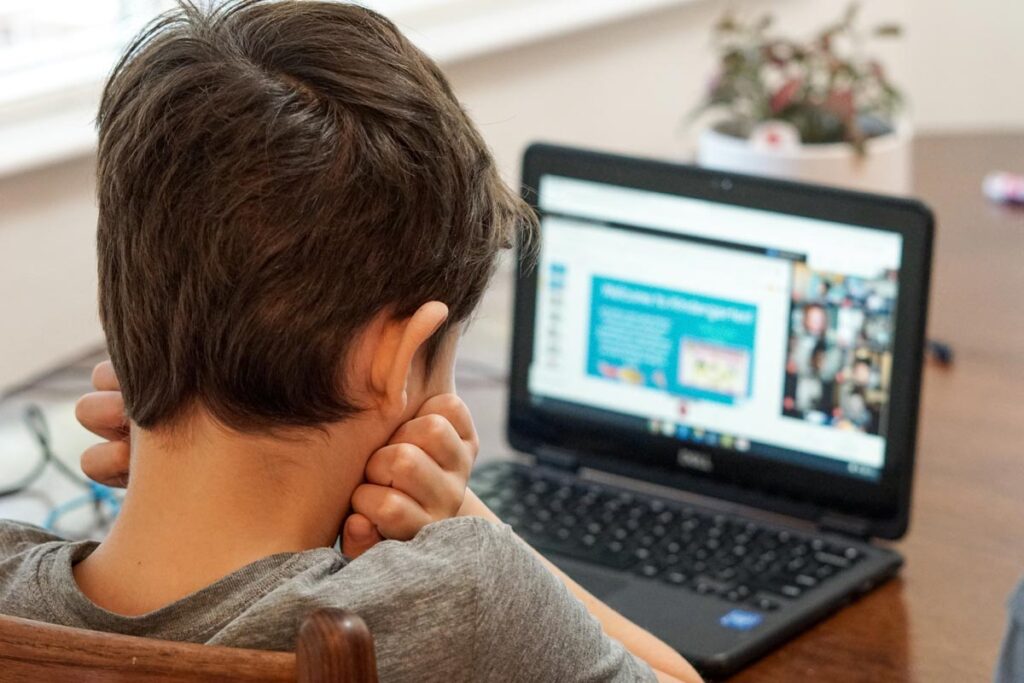
AI-powered adaptive learning platforms utilize artificial intelligence algorithms to personalize the learning experience for students based on their individual needs, abilities, and learning styles. These platforms collect and analyze data on students’ performance, behavior, and preferences to dynamically adjust the content, pace, and difficulty level of the educational materials. This personalized approach aims to optimize student engagement, comprehension, and mastery of the subject matter.
Here are a few examples of AI-powered adaptive learning platforms:
Khan Academy: Khan Academy is a widely recognized online learning platform that utilizes AI to provide adaptive instruction in various subjects. It assesses students’ knowledge through diagnostic quizzes and uses the results to create personalized learning paths, recommending specific exercises and lessons based on their strengths and weaknesses.
Duolingo: Duolingo is a language-learning platform that employs AI algorithms to adapt its language courses to individual learners. The system analyzes users’ responses and progress, identifying areas that require more attention, and tailors subsequent lessons accordingly. It focuses on reinforcing weaker language skills and adjusting the difficulty level based on the learner’s performance.
DreamBox Learning: DreamBox Learning is an adaptive math learning platform designed for students from kindergarten to grade 8. Using AI algorithms, it adapts the content and sequence of math lessons based on a student’s ongoing performance, providing personalized recommendations for activities and assignments to promote conceptual understanding and skill development.
Cognii: Cognii is an AI-powered virtual tutor that provides personalized feedback on students’ written responses. It utilizes natural language processing to analyze the content and structure of students’ answers and provides customized feedback, suggestions, and explanations. This helps students improve their writing skills and enhances their understanding of the subject matter.
ALEKS (Assessment and Learning in Knowledge Spaces): ALEKS is an adaptive learning platform focused on mathematics. It uses AI algorithms to assess students’ knowledge and identifies gaps in their understanding. Based on this assessment, it generates personalized learning modules and provides ongoing feedback to guide students towards mastery of mathematical concepts.
In conclusion, parents should be aware of emerging technologies in education to empower their children with the best possible learning opportunities and prepare them for the future. By staying informed and involved, parents can support their children’s academic journey, foster collaboration and engagement, promote digital citizenship, and advocate for the integration of effective educational technologies in schools. Being knowledgeable about emerging technologies allows parents to bridge the generation gap, establish a positive relationship centered around education and technology, and ensure that their children develop the skills necessary to thrive in a rapidly evolving digital world.
